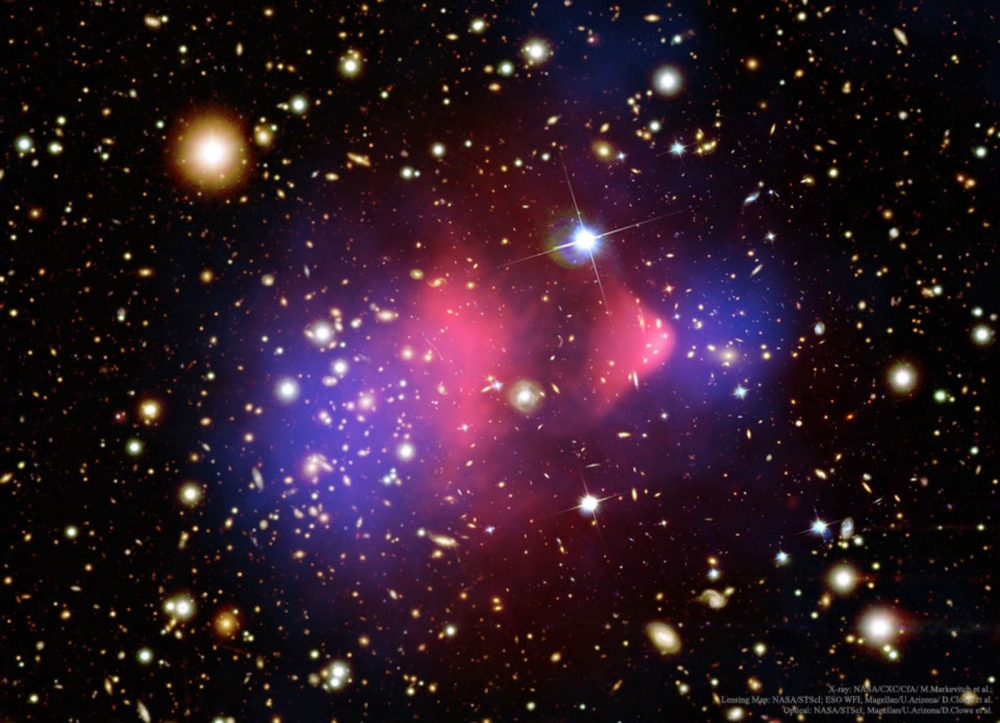What Is Dark Matter and Why Hasn't Anyone Found It Yet?

In the Bullet Cluster, light seems to bend in what should be empty space. Researchers now believe those areas contain dark matter. Image: X-ray: NASA/CXC/CfA/ M. Markevitch et al.; Lensing Map: NASA/STScI; ESO WFI; Magellan/U.Arizona/ D.Clowe et al. Optical: NASA/STScI; Magellan/U.Arizona/D.Clowe et al.
Ryan F. Mandelbaum 7.6.2018
Five-sixths of the universe’s stuff seems to be missing, and we just can’t find it. It’s called “dark matter,” and scientists have gone looking for it with some of the world’s largest, most expensive experiments.
Time and time again, these experiments come up empty handed. Most recently, the scientists at the XENON1T experiment, a literal ton of super-sensitive liquid xenon, didn’t find the signal they were looking for after a nine-month search. Nor has the Large Hadron Collider, the world’s largest particle accelerator in Geneva, Switzerland, managed to turn up anything. So, you might wonder, what are we looking for and why? And why are the world’s physicists so deeply divided about what “dark matter” could be?
Big, strange somethings
As early as the late 19th century, scientific observations were telling us that the universe was more massive than it appeared. Scientists now consider Swiss physicist Fritz Zwicky to be the father of dark matter. Zwicky realized that galaxies in the Coma Cluster seemed to move much too quickly. He thought there should perhaps 400 times more mass in the cluster than he could see, a bit of an overshoot, and called the missing stuff dunkle Materie, or “dark matter.”
See full text